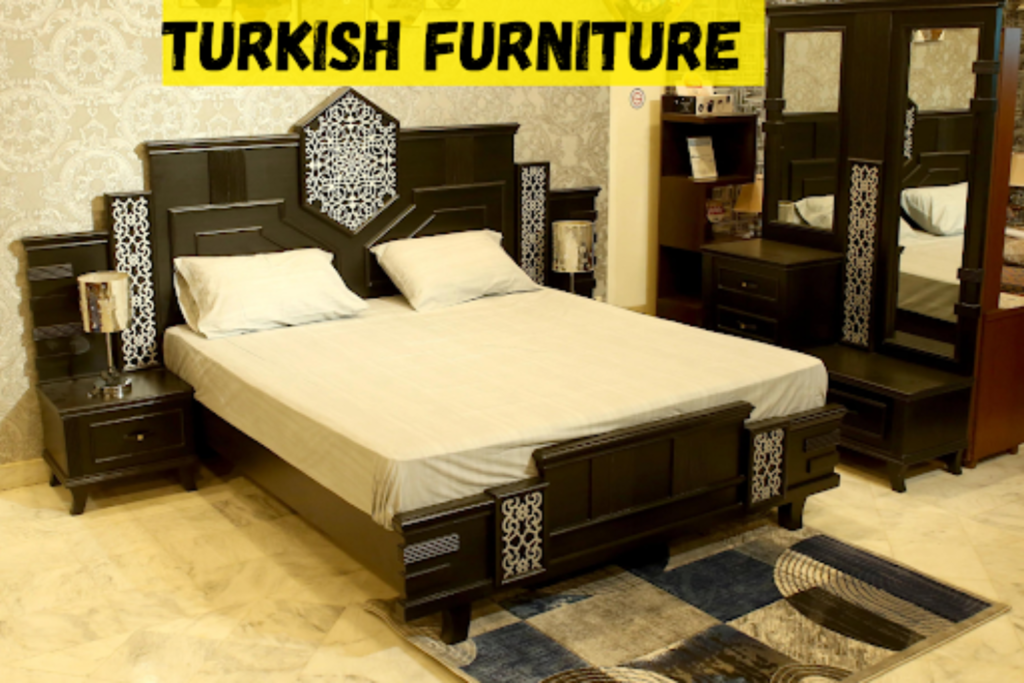In the world of interior design, the blend of modern and traditional elements creates spaces that are both timeless and stylish. Contemporary Turkish furniture exemplifies this fusion, combining the rich heritage of Turkish craftsmanship with the sleek lines and functionality of modern design. This blog post explores how contemporary Turkish furniture brings together the best of both worlds, offering pieces that are not only beautiful but also versatile and practical.
The Essence of Turkish Furniture:
Turkish furniture has a long history rooted in the Ottoman Empire, characterized by intricate carvings, ornate designs, and luxurious materials. Traditional Turkish pieces often feature rich woodwork, detailed inlays, and vibrant textiles such as kilim and suzani. These elements reflect the cultural heritage and artistic prowess of Turkish artisans.
In contrast, modern furniture design emphasizes simplicity, clean lines, and functionality. The challenge and beauty of contemporary Turkish furniture lie in its ability to integrate these modern principles while honoring traditional craftsmanship. The result is a collection of furniture that is both aesthetically pleasing and highly functional.
Key Features of Contemporary Turkish Furniture
1. Blend of Materials:
Contemporary Turkish furniture often combines traditional materials like solid wood, metal, and natural textiles with modern elements such as glass and sleek finishes. This blend creates pieces that are rich in texture and visually appealing.
2. Intricate Detailing:
While modern design tends to be minimalistic, contemporary Turkish furniture retains intricate detailing, such as carved patterns, inlaid mother-of-pearl, and hand-painted motifs. These details add depth and character to each piece.
3. Functional Design:
Modern Turkish furniture is designed with practicality in mind. Multi-functional pieces, such as storage ottomans and extendable tables, cater to the needs of contemporary living while maintaining a stylish appearance.
4. Vibrant Textiles:
Traditional Turkish textiles, known for their bold colors and patterns, are often used in upholstery and accessories. These textiles bring warmth and personality to modern designs, creating a unique and inviting atmosphere.
5. Cultural Fusion:
Contemporary Turkish furniture seamlessly blends cultural motifs with modern aesthetics. This fusion results in pieces that feel both exotic and familiar, making them suitable for a variety of interior styles.
Incorporating Contemporary Turkish Furniture into Your Home
Living Room:
A contemporary Turkish sofa with clean lines and traditional upholstery can serve as the centerpiece of your living room. Pair it with a sleek coffee table featuring intricate inlays and a handwoven Turkish rug to create a space that is both modern and culturally rich.
Dining Room:
Choose a dining table that combines solid wood with metal accents for a modern touch. Complement it with upholstered chairs in vibrant Turkish textiles. A minimalist chandelier with traditional motifs can add a touch of elegance to the dining area.
Bedroom:
Opt for a bed frame with subtle carvings and a streamlined design. Enhance the space with Turkish bedspreads, silk pillows, and a contemporary dresser featuring detailed woodwork. These elements will create a serene and stylish retreat.
Office:
Incorporate a modern desk with traditional Turkish details, such as carved legs or decorative hardware. Add a comfortable chair upholstered in Turkish fabric and organize your space with stylish storage solutions that blend functionality and beauty.
Outdoor Spaces:
Transform your patio or balcony with contemporary Turkish outdoor furniture. Choose pieces with sleek metal frames and vibrant cushions. Add a Turkish rug designed for outdoor use and decorative lanterns to create an inviting and exotic outdoor retreat.
Conclusion:
Contemporary Turkish furniture is a perfect example of how modern design can honor and preserve traditional craftsmanship. By blending intricate detailing, vibrant textiles, and functional design, contemporary Turkish pieces bring a unique charm and sophistication to any space. Whether you are redecorating your entire home or looking for a statement piece, contemporary Turkish furniture offers a beautiful fusion of past and present, making it an excellent choice for modern living.
FAQs
What defines contemporary Turkish furniture?
Contemporary Turkish combines traditional Turkish craftsmanship with modern design principles. It often features a blend of materials, intricate detailing, functional design, vibrant textiles, and cultural motifs.
How can I incorporate contemporary Turkish furniture into a modern home?
To incorporate contemporary furniture, choose pieces that combine modern lines with traditional elements. For example, a sleek sofa with kilim cushions or a minimalist dining table with intricately designed chairs can blend seamlessly into a modern home.
What materials are commonly used in contemporary Turkish furniture?
Common materials include solid wood, metal, glass, and natural textiles such as wool, silk, and cotton. These materials are often combined to create pieces that are both durable and visually appealing.
How do I care for contemporary Turkish furniture?
To maintain contemporary Turkish furniture, regularly dust and clean it with a soft cloth. Use furniture polish for wooden pieces and follow specific care instructions for textiles to preserve their colors and patterns.
Where can I buy contemporary Turkish furniture?
Contemporary furniture can be found in specialized stores that focus on Middle Eastern or Mediterranean home décor, as well as online marketplaces. Some Turkish makers also offer custom pieces through their websites.
Can contemporary furniture be customized?
Yes, many furniture makers offer customization options, allowing you to choose specific materials, designs, and sizes to fit your needs and preferences.
How does contemporary Turkish enhance a room’s aesthetic?
Contemporary furniture adds elegance and cultural depth to any room. Its detailed craftsmanship and use of rich colors and textures create a warm and inviting atmosphere.
Is contemporary furniture expensive?
The cost of contemporary furniture can vary widely depending on the materials, craftsmanship, and intricacy of the design. While some pieces can be affordable, high-end, handcrafted items may come with a higher price tag.

